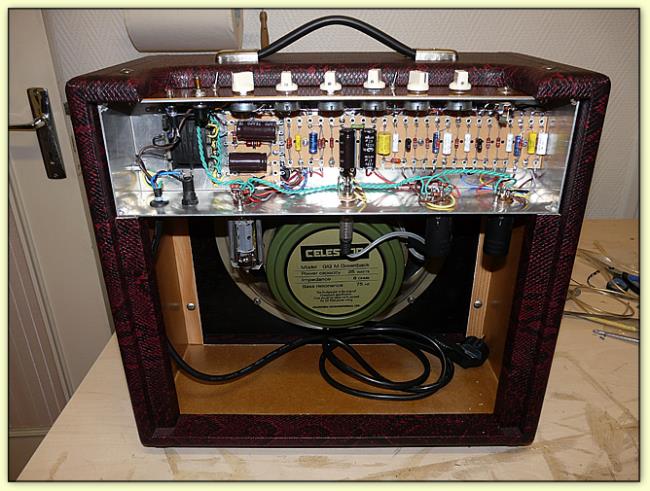
However, the first guitar amp engineers quickly realised that the preamp is the ideal place to add a tone control network. The simplest preamp takes a single gain stage, feeds it into a volume control and outputs it to a power amp. These remove electromagnetic interferences that attack the input signal on its way down the guitar cable and into the amplifier. It’s important to note that the increased input signal is still relatively small and requires more amplification further down the circuit.Ī preamp also normally contains some simple noise filtering circuits. Now larger and more robust, the signal can pass through the rest of the amp’s circuit more freely. This component amplifies the miniscule input signal to a larger size and converts it to a much lower impedance. The main component of a gain stage is an active electronic component, either a vacuum tube or a transistor. The preamp does this is by passing the input signal through circuitry called gain stages, usually at least 2. The main task of the preamp is to transform and shape this tiny signal (the input signal) into a larger, stronger signal for more effective use. The electrical signal generated from a guitar’s magnetic pickups has a tiny voltage, small current and is very susceptible to degradation and interference. Let’s now discuss the function of each of these components in more depth. A single head paired with a single speaker cabinet is a half stack.Īt the most fundamental level, every guitar amplifier features a preamp, power amp and speaker.

#Guitar amp parts full
A stack with one head and two speaker cabinets is a full stack. This setup is an amp stack or simply, a stack. One box contains the preamp and power amp sections (called the amplifier head) and another box contains only the speakers (called the speaker cabinet). These amplifiers separate into two physical boxes. Some players require bigger, high-powered amplifiers with multiple speakers to fill large venues, as multiple combo amplifiers become too unwieldy to carry. Combo amplifiers are the most popular style of guitar amplifier, due to their convenience and portability. Guitar amplifiers built with the preamp, power amp and speaker all in the same wooden box are called combo amplifiers. It then outputs a much larger version of the signal with voltage high enough to drive a speaker.ģ) The speaker is a transducer system that turns electrical energy (from the power amp) into audible sound. Almost all of the controls on the front panel of the guitar amp (gain, bass, mid, treble, volume etc.) are controlling the circuitry within the preamp.Ģ) The power amp receives the signal from the preamp.

This diagram represents the basic internal architecture of guitar amplifiers from the 1930’s until the mid-1970’s.ġ) The preamp contains the circuitry that is primarily responsible for shaping the guitar sound and delivering it to the power amp in an optimal form. We’ll also look at how these parts interact with each other to create guitar tone.Ĭontributed by Matt Walsham for the Roland Australia Blog Anatomy of a basic guitar amplifierĪt the most fundamental level, a guitar amplifier consists of three sections. In this article, we’ll break down a guitar amplifier into its functional parts and explain how each of these parts work. The more a guitarist understands about how a guitar amplifier functions, the better equipped they are to achieve their own unique tone. In this endeavour, knowledge is imperative. Without a doubt, the guitar amplifier is an integral part of the instrument itself.Īs such, it is part of an electric guitar player’s journey to find an amplifier for them and their chosen guitar.

Guitar amplifiers imprint their own sonic signatures onto a player’s sound and significantly alter the way that the guitar actually feels under the player’s fingers. Electric guitar amplifiers however, are capable of so much more. Generally, an electronic audio amplifier will be a device that makes a source signal louder. Guitar amplifiers are unique in the world of music.


 0 kommentar(er)
0 kommentar(er)
